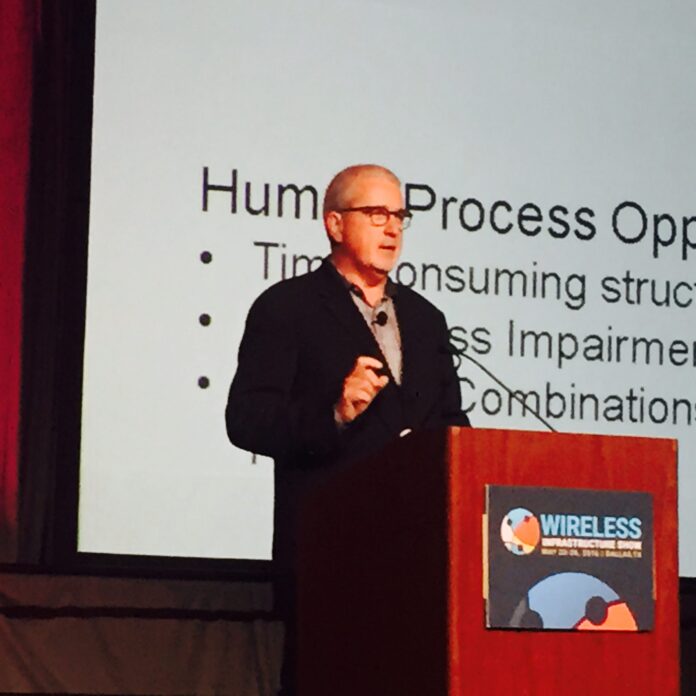T-Mobile customer base is ‘diverse, not ghetto;’ SVP calls out need to ‘industrialize small cells’
DALLAS — T-Mobile US is a very different company than it was back in 2011 on the heels of a failed deal with AT&T, so explained Dave Mayo, SVP of technology at the carrier, at this week’s Wireless Infrastructure Association annual event.
Under the leadership of CEO John Legere, Mayo pointed out, the carrier surpassed Sprint as the No. 3 U.S. carrier by customer count, has a $32 billion market cap supported by 65.5 million customers and more than 50,000 employees.
“And, yes, the fastest LTE network in the country. We’ve retained the fastest-network claim for nine consecutive quarters now.” Mayo called those achievements “pretty remarkable for the little company that everyone declared dead.” We “believe there’s still lots of customers that will come adopt the T-Mobile franchise over the coming years.”
Mayo also lauded the carrier’s Binge On video streaming platform, which he said would continue to adopt new streaming services until “the vast majority of our video content will be under the franchise and basically free to our customers.”
Mayo summed up the “Un-carrier” approach developed by Legere, noting: “It’s about rewriting the rules, changing the way we compete, delivering unparalleled value to our customers … and being simple and transparent.”
In a barb directed at Sprint – a favorite target of Legere, particularly on Twitter – Mayo recalled a somewhat infamous Sprint web video, quickly taken offline and prompting an apology from Sprint CEO Marcelo Claure, during which a woman said she associated T-Mobile US with the word “ghetto.”
“We have a very diverse customer base,” Mayo said. “Not ghetto. Our employee base is equally diverse and our aspiration is for our supplier base to become increasingly diverse.”
On the network side, Mayo said the industry is moving toward massive small cell deployment, but that process is challenging based on the necessary concurrency between carriers and municipalities. He said the goal is to “industrialize our ability to deploy small cells … such that we can find a clean path to deploying in mass. Over time the industry is going to require lots of small cells. Frankly, the processes we use to build macro sites is not scalable.”
On smart cities: “I don’t know that we’ve figured out how it’s all going to play together. It kind of fits into 5G. Other than the initial push some of the operators are pursuing based on a home-based wireline replacement … we’ll see how it plays out over time.”
Follow coverage of the Wireless Infrastructure Show at RCR Wireless News and Industrial IoT 5G Insights.

